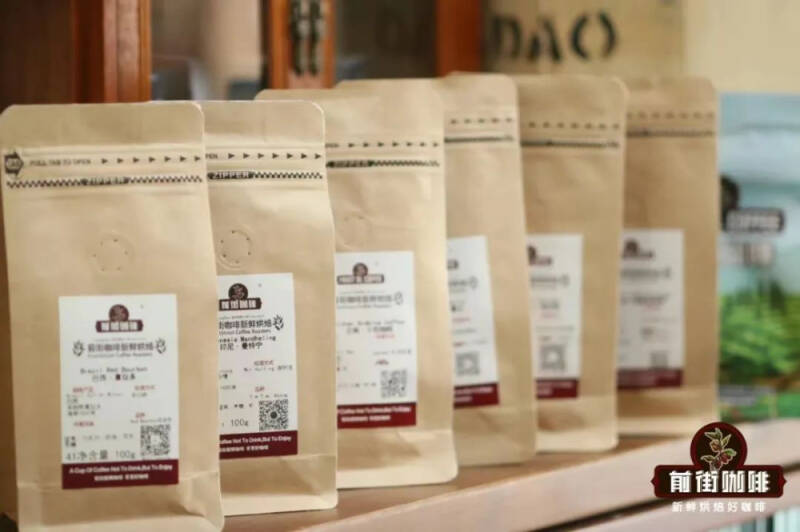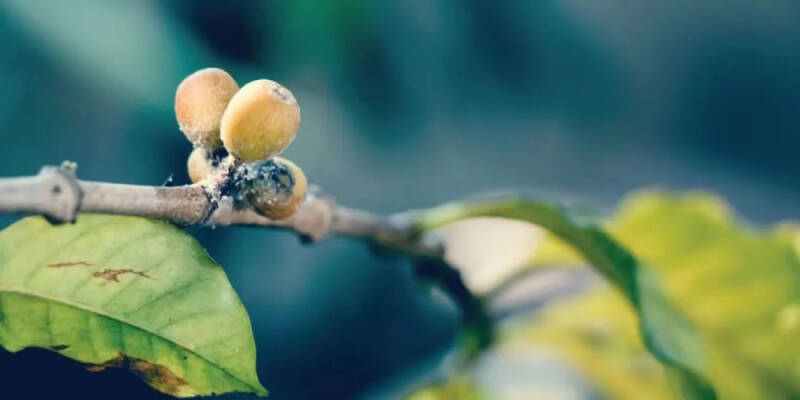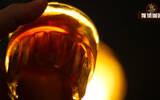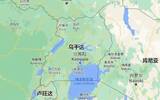What are the origins of these coded coffee bean species? Is SL34 an iron pickup or a bourbon? What are 74110 and 158?
Friends who often drink hand-brewed coffee must pay more or less attention to the variety of coffee they drink, because in addition to the producing area and treatment, the variety of beans is also an important factor in the flavor.

In the column of bean seed information, some bean seed names similar to mysterious numbers appear from time to time. Unlike conventional tin cards, roses and other beans, they have a loud name, but a string of numbers or a mixture of numbers and English "codes". This makes me wonder, what is the moral of these codes? Then let's share it with Qianjie.
A long string of numbers such as 74158, 74110, etc. 74Compact 75 series 74110, 74112, 74158 can be said to be the resident contestants of Ethiopia's COE list. Yes, they are also the names of bean seeds! In 1970, coffee anthracnose broke out in Ethiopia. The disease can cause spots and necrosis of coffee fruits on coffee trees. Generally speaking, coffee trees with this disease will directly reduce their production by 20%, and in severe cases, it will reach a terrible 70% or 80%! So it can be seen that the damage caused by this disease to Ethiopia's coffee economy at that time was immeasurable. Harald and Yejasuffe were the worst-hit Ethiopian places at that time.

Spraying pesticides will not cure the spread of the disease, so the Jinma Agricultural Research Center (JARC) plans to cure it directly from the source. That is, to find out the varieties with high disease resistance genes, so that they can be directly immune to the harm caused by the disease. Numbers such as 74110 and 74158 were later released by JARC with anthracnose resistance. The first two digits "74" represent the year of discovery, and the last three digits "110swab 158" represent the number of the experimental samples in that year. For example, "74110" is variety 110 in 1974.
F1, H1F1 and H1 are two popular coffee varieties in America in recent years, and their birth also has something to do with coffee diseases. Also in 1970, the coffee industry in the American continent was also affected by disease. Since Arabica was mostly planted at that time, it was not immune to leaf rust wherever it went, and the coffee industry in the Americas suffered a heavy blow. In order to revitalize the coffee industry and reduce the losses caused by subsequent disease revisits, the French Center for Agricultural Research and Development (CIRAD) and the Coffee Organization of Central American countries (ROMECAFE) jointly launched a new program to cultivate bean varieties with strong disease resistance, which is called F1. And the coffee variety cultivated by this project is F1. (the seed of Baja bean is F1)
The H1 is the result of the laboratory continuing to carry out research after the birth of the F1 series. H1, whose full name is Centroamericano H1, is a hybrid of Lumi Sultan and Saqimo T-5296.
SL series (SL28, SL34, etc.) SL series must be very familiar with, this series of SL28, SL34 can be said to be Kenya's "star" varieties. Whenever talking about them, the front street will think of the bright sour smell of Kenyan coffee tomatoes, tears will always unconsciously flow out of the corners of the mouth.
In 1930, the Kenyan government commissioned Scott Laboratories (Scott Laboratory) to conduct research on coffee breeding in order to find out coffee varieties that can be grown commercially in Kenya. So over the next few years, Scott's lab collected varieties from different places and conducted targeted research. Eventually, several beans stand out, and the selected beans are prefixed with SL, an acronym for Scott Lab, followed by their corresponding numbers.
SL28 and SL34 are the best in this series. After genetic identification, it was found that SL28 is a variety of bourbon varieties, while SL34 is a variety of iron pickup varieties. Because of their excellent flavor and strong drought and disease resistance, they were immediately planted on a large scale in Scott's laboratory, which can be said to be very excellent! In addition to these common "numbered varieties", there are other unpopular "numbered varieties" such as K7 and ET47. Save these for next time, and then come slowly in front of the street!
-END-
Important Notice :
前街咖啡 FrontStreet Coffee has moved to new addredd:
FrontStreet Coffee Address: 315,Donghua East Road,GuangZhou
Tel:020 38364473
- Prev

What is the reason why the coffee that comes out is sour? How to make hand-brewed coffee? Does insufficient extraction make coffee more sour?
After the baptism of "enthusiasm" in summer, many friends began to fall in love with lightly roasted coffee with flowers and fruits. Because lightly roasted coffee retains more sour substances, the produced iced coffee will have a fuller juice feel and is more suitable for comfort in this hot summer. But soon a friend found out that he was
- Next

Uganda| Introduction to the coffee producing area of Bujisso
Africa is the second largest continent in the world and is rich in mineral, hydropower, agricultural and forestry resources. Africa is generally a plateau. The average temperature in three-quarters of the area is above 20 ° C. It is very suitable for agricultural cultivation such as coffee. Moreover, the African country Ethiopia is also recognized as the birthplace of coffee, and neighboring countries will produce coffee.
Related
- What effect does Italian American coffee with filter paper have? Will coffee taste better if it is put on filter paper at the bottom of the powder bowl?
- What is the color difference in coffee beans? What are the characteristics of honey processed coffee beans? Why are the anaerobically treated coffee beans uneven in color?
- How does novice Xiaobai quickly get started and make coffee? Newbies learn to make coffee by hand and share the specific steps and process process!
- Costa tea has a shelf life of 100 years?! Expert: Unable to verify
- It's a huge uproar! American milk addition was rejected by Manner employees?!
- Mocha pot coffee bean recommendations| How fine and how much powder should be used for grinding? What parameter ratios do I need to use to make milk with Mocha pot coffee?
- What are the characteristics of the world's top ten coffee beans treated with Costa Rica honey? How to make black honey kadura from Tarazhu Pilon Processing Plant taste good?
- How to make deep-roasted coffee? What grinding water temperature does authentic Jamaica Blue Mountain No. 1 coffee use to brew it well?
- Selected high-grade rose summer coffee flavor tasting guide Why Panama rose summer has the aroma of flowers and fruits
- What equipment does a novice Xiaobai need to buy to learn to make coffee? Filter cup electronic scale bean grinder manual flushing pot purchase guide

